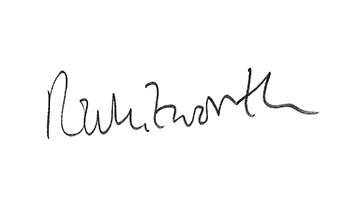Modern life is fast. Too fast, some would say – and it shows no signs of slowing. Indeed, innovation naturally drives towards getting more done, faster (which can also be called efficiency, but only if quality is not lost along the way). It’s easy to get whipped up into the whirlwind, finding ourselves scrambling for a foothold. But on the gloriously sunny Spring Bank Holiday, life slowed almost to a standstill, as I cruised down a Lincolnshire canal aboard my brother’s new home – a narrow boat. The leisurely pace, combined with a lack of technology (my ultrafast smart phone had burned too bright for this world), seemed to grant us access to a secret portion of extra time. Time to catch breath, time to catch up, time to simply think. That’s what holidays are for, of course. It feels natural to take time out, when we are supposed to...
So, what can we achieve when we give ourselves a little extra time to think while at work? At a recent “Editorial Retreat,” my team and I dedicated two days – enforced thinking time – to find out. And we were all delighted, perhaps even surprised, by our creative output (which will be reflected in future pages of The Analytical Scientist for your benefit!). Our jobs are already creative in nature, and we’re proud of the work that we do, so we weren’t aiming for faster or better necessarily, but rather for “different” – another direction of innovation. In this issue, it’s great to welcome back Chris Harrison (read more) – innovator in analytical education and “flipped classroom” advocate. By investing effort in being more creative with technology outside the classroom, Chris has made time more valuable in the classroom for his students – who, in turn, are more able to learn a key analytical skill: creativity. As Chris says, “[Analytical chemists] need to be able to approach problems from unexpected angles, as problems (and their solutions) are not always formulaic.” Slip flow star Mary Wirth is no stranger to tackling challenges from new directions (1), and though her creative work on colloidal crystals in “ultraefficient” chromatography was originally questioned, time, at least, was on her side. Here, Mary shares some of her current innovative work on stationary phases for intact glycoprotein analysis, using HILIC-MS. The result of time spent on creative solutions? The characterization of IgG1 glycosylation can be performed not in 1.5 days but in less than 30 minutes. Innovative (analytical) solutions require creativity; creativity demands thinking time. And though sailing off into the horizon is unlikely to be welcomed by your boss, the fruits of a few hours (or even minutes) of contemplation, as often as you can afford it, almost certainly will be.
Rich Whitworth Content Director

References
- www.theanalyticalscientist.com/issues/0713/slip-flow-star).




